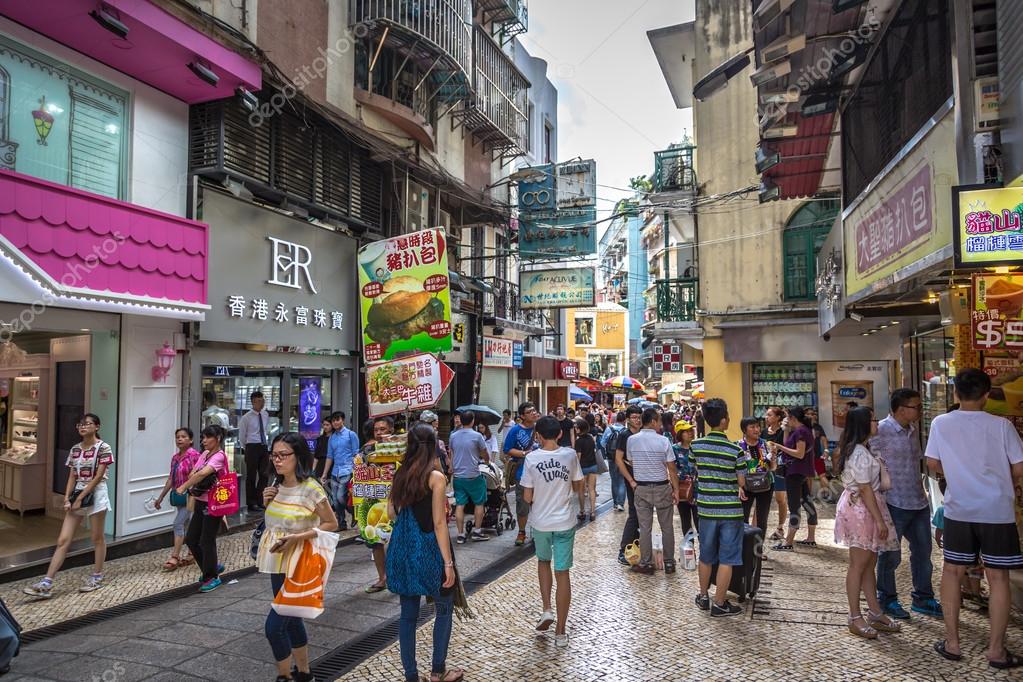Our Terms & Conditions | Our Privacy Policy
OPINION – An allegorical narrative: SME’s journey through the Sustainable Development Goals
The morning sun glinted off the mirrored façades of Cotai’s towering integrated resorts as Lei Mei locked the door to her modest café in Old Taipa Village. The juxtaposition wasn’t lost on her—her small business, passed down through three generations, now operated in the shadow of multinational gaming corporations. While those giants published glossy sustainability reports to satisfy Hong Kong Stock Exchange requirements, Lei had simpler concerns: keeping her family business competitive while honouring her grandfather’s legacy of community connection.
 José Pinto, Assistant Professor, City University of Macau
José Pinto, Assistant Professor, City University of Macau
“You should see this,” said Wei, Lei’s cousin and business partner, sliding a tablet across the counter. The screen displayed an invitation to a workshop entitled: SMEs—Practical Implementation for Local Businesses.”
“Another reporting framework?” Lei sighed. “We barely have time to manage our accounts.”
“This one’s different,” Wei insisted. “It’s about aligning with goals that actually make sense for businesses like ours.”
The workshop space in the old district hummed with the energy of thirty local business owners—ranging from restaurateurs to shopkeepers, service providers to small manufacturers. The facilitator, Dr Lam, began by addressing the elephant in the room.
“You’re probably wondering why you—with your limited resources and time—should care about the UN Sustainable Development Goals when the big companies have entire departments for this,” she said. “The answer is simple: because you can implement them in ways the giants cannot.”
She projected a simplified version of the SDGs onto the screen, clustered into groups relevant to Macau’s context.
“Unlike complex reporting standards designed for multinationals, the SDGs offer something different—a compass, not a rulebook. You choose which goals align with your business and community, then take measurable steps towards them.”
Lei listened sceptically but found herself intrigued when Dr Lam began discussing practical applications.
“Consider SDG 12—Responsible Consumption and Production. For a café like yours,” she nodded towards Lei, “this might mean tracking and reducing food waste, sourcing locally, or implementing water-saving practices. These actions don’t require consultants or reporting experts—just intentional business decisions you’re already making every day.”
Three months later, Lei stood before her staff of six, presenting their newly developed Three Goals Initiative. After the workshop, she and Wei had selected three SDGs that resonated most with their café’s operations and values:
SDG 8 (Decent Work and Economic Growth): They committed to fair wages above the local minimum, predictable scheduling, and professional development opportunities for staff.
SDG 12 (Responsible Consumption): They implemented a food waste tracking system, redesigned their menu to minimise waste, and partnered with a local composting initiative.
SDG 11 (Sustainable Cities and Communities): They pledged to source 50 per cent of ingredients from Macau and nearby Greater Bay Area producers, showcasing local heritage through their offerings.
“We’re not doing this because some stock exchange requires it,” Lei explained to her curious staff. “We’re doing it because it makes business sense and connects us to something larger.”
The programme’s simplicity proved to be its strength. Rather than drowning in complex metrics, Lei focused on basic measurements that told their sustainability story:

For SDG 8, they tracked employee retention rates and training hours, finding that their turnover dropped significantly once staff understood the café’s broader purpose.
For SDG 12, they measured food waste reduction, discovering that their new tracking system cut waste by 22 per cent in just two months—translating directly to cost savings.
For SDG 11, they calculated local purchasing percentages and documented stories of their suppliers, creating compelling content for their social media that resonated with both locals and tourists seeking authentic experiences.
On a sweltering August afternoon, Lei received an unexpected visitor—a purchasing manager from one of the integrated resorts whose massive form dominated the skyline across the water.
“We’re revamping our local supplier programme,” the woman explained, settling into a chair with a coffee. “Our sustainability department is pushing us to strengthen community connections as part of our SDG commitments. Your café’s approach to local sourcing and waste reduction has been getting attention.”
Lei smiled, realising how their small-scale implementation of the SDGs had created visibility that traditional marketing couldn’t buy. “We’re not doing anything complicated—just being intentional about our impacts.”

“That’s exactly it,” the purchasing manager nodded. “The mega-corporations can publish hundred-page reports, but sometimes we miss the authentic connections you’ve created. We’d like to feature your coffee in our employee dining areas and potentially in some of our restaurant outlets.”
By the following spring, Lei and Wei found themselves presenting at the same SME workshop where their journey had begun. The room was now packed with twice as many local business owners.
“The beauty of the SDGs for businesses our size is that we can adapt them to our specific contexts,” Lei explained. “We don’t need expensive consultants or reporting software—we need clear goals and simple metrics that make sense for Macau.”
She shared how their Three Goals Initiative had not only improved operations but opened doors to partnerships with larger companies seeking authentic local sustainability stories. Their approach had even caught the attention of regulators, who are developing incentives for SMEs implementing SDG-aligned practices.
“The multinational companies approach the SDGs from the top down, with reporting requirements and compliance frameworks. We approach them from the ground up, embedding them into our daily operations in ways that make sense for our scale and community.”
Later that evening, Lei sat with her grandfather in the living quarters above the café. At 92, he still took keen interest in the business he had founded decades earlier.

“I don’t understand all this SDG business,” he admitted, “but I understand what you’re trying to do.”
He pointed to the faded photos on the wall—images of the café in its early days, when Taipa was still a fishing village.
“Business was never just about money for me,” he said. “It was about providing for our family while being part of something bigger—our community, our heritage, our future.”
Lei nodded, realising that the contextual adaptation of the SDGs for Macau’s SMEs wasn’t really a new concept at all—it was simply giving structure and global connection to values that had always been there.
“The big companies have their reports and their stock exchange requirements,” she said. “But we have something they’re trying to recapture—authentic connection to place and purpose.”
Her grandfather smiled. “Different paths up the same mountain,” he said.
As night fell over Macau, the casinos’ lights illuminated the sky like artificial stars. But in neighbourhoods throughout the peninsula and islands, small businesses like Lei’s were finding their own light—not in the glossy pages of sustainability reports, but in the daily decisions that slowly, steadily built a more sustainable and connected community, one small enterprise at a time.
[ad_1]
Images are for reference only.Images and contents gathered automatic from google or 3rd party sources.All rights on the images and contents are with their legal original owners.
[ad_2]



Comments are closed.